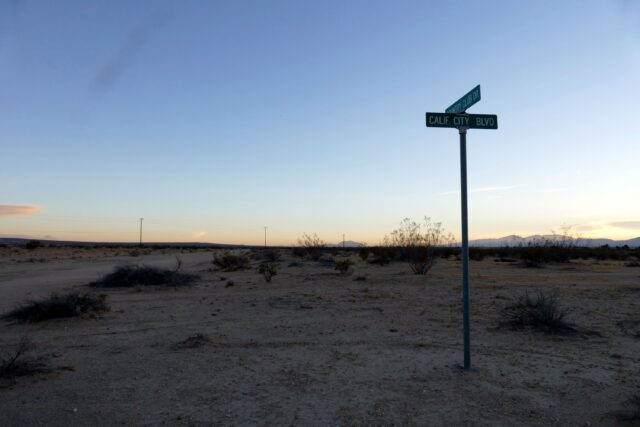In California’s Antelope Valley, a grand vision once took shape. California City was meant to be a bustling metropolis, a shining example of modern urban planning. However, today, it stands as an example of unfulfilled ambitions, with its dusty streets and empty lots serving as reminders of dreams that never materialized.
Foundation of California City

California City was founded in 1958 by Nat Mendelsohn, a sociologist and real estate developer. Mendelsohn purchased 80,000 acres of desert land, with the dream of creating a city that would rival Los Angeles.
His plan was meticulous, featuring a central park, an artificial lake and even a golf course, with the overall design capable of accommodating 400,000 residents, with a downtown core and several satellite suburbs.
Nat Mendelsohn was driven by California’s post-war boom

Nat Mendelsohn’s vision was driven by the post-war boom America was experiencing and the belief that Los Angeles was reaching its population limit. California City was marketed aggressively prior to and during its development, with a promise made to future residents of a utopian lifestyle in the desert.
The initial development included paved roads, water infrastructure and even street signs for neighborhoods that never saw a single house built.
Difficulties securing a reliable water source

The first major challenge in constructing California City was securing a reliable water source. Developers invested heavily in locating water, but the aquifer was situated under the western part of the city, far from the planned eastern hub.
This became a logistical nightmare, and the issue both delayed development and increased costs significantly.
Financial struggles

Unsurprisingly, financial struggles soon followed.
By the time California City was incorporated in 1965, it was already a whopping $7.5 million in debt. The promised “Land Rush” of eager residents never materialized, and the city struggled to attract enough people to justify further development in the area.
California City’s decline

Despite these early and very worrying setbacks, Nat Mendelsohn and his team continued to push forward. However, the 1970s brought a wave of lawsuits from landowners who felt they’d been deceived by the marketing hype.
The Federal Trade Commission (FTC) fined the developers for false advertising, and they were forced to repay over $4 million to the frustrated buyers. This was a massive financial blow and, coupled with a lack of interest from potential residents, marked the beginning of California City’s decline.
Becoming an abandoned wasteland

By the late 1970s, California City had sold over 50,000 lots, but only a fraction of the planned development had been realized. Infrastructure, including water and sewage systems, became a burden, rather than an asset, and the dream of a thriving desert metropolis faded into the reality of an abandoned wasteland.
Who still lives in California City?

Today, California City looks nothing like the original vision.
It has a small population of around 14,000, far from the 400,000 residents it was designed to accommodate. The park, which was once meant to be a place of community and congregation, now features a lake that’s become green with algae and a waterfall that no longer flows.
‘Ghost town’ status

California City’s story isn’t all bad. Despite its ghost town status, it’s has found a niche as an affordable place to live for retirees and workers from nearby Edwards Air Force Base, California. It offers a handful of amenities, including its own school district, public bus service and even a municipal airport.
However, the empty streets and undeveloped lots serve as a constant reminder of what could have been.
California City’s legacy

California City is a fascinating case study of urban planning and real estate speculation and failure. It never became large city, nor the bustling metropolis Nat Mendelsohn once envisioned. Its development was short-lived, and the settlement fell victim to over-ambition and miscalculation. Largely undeveloped, the city sits in a semi-abandoned state.
More from us: 30 Abandoned Places Across the United States That Send Shivers Down Our Spines
Want to become a trivia master? Sign up for our Today In History newsletter!
The small, resilient population that calls this peculiar place home are surrounded by the remnants of an unfulfilled promise.